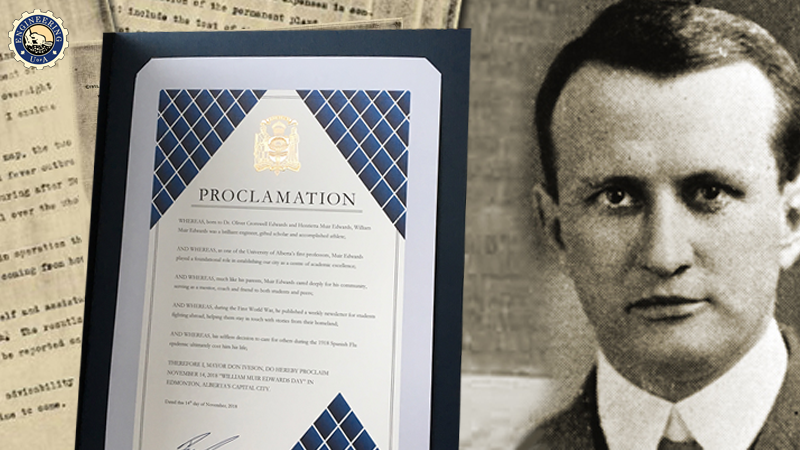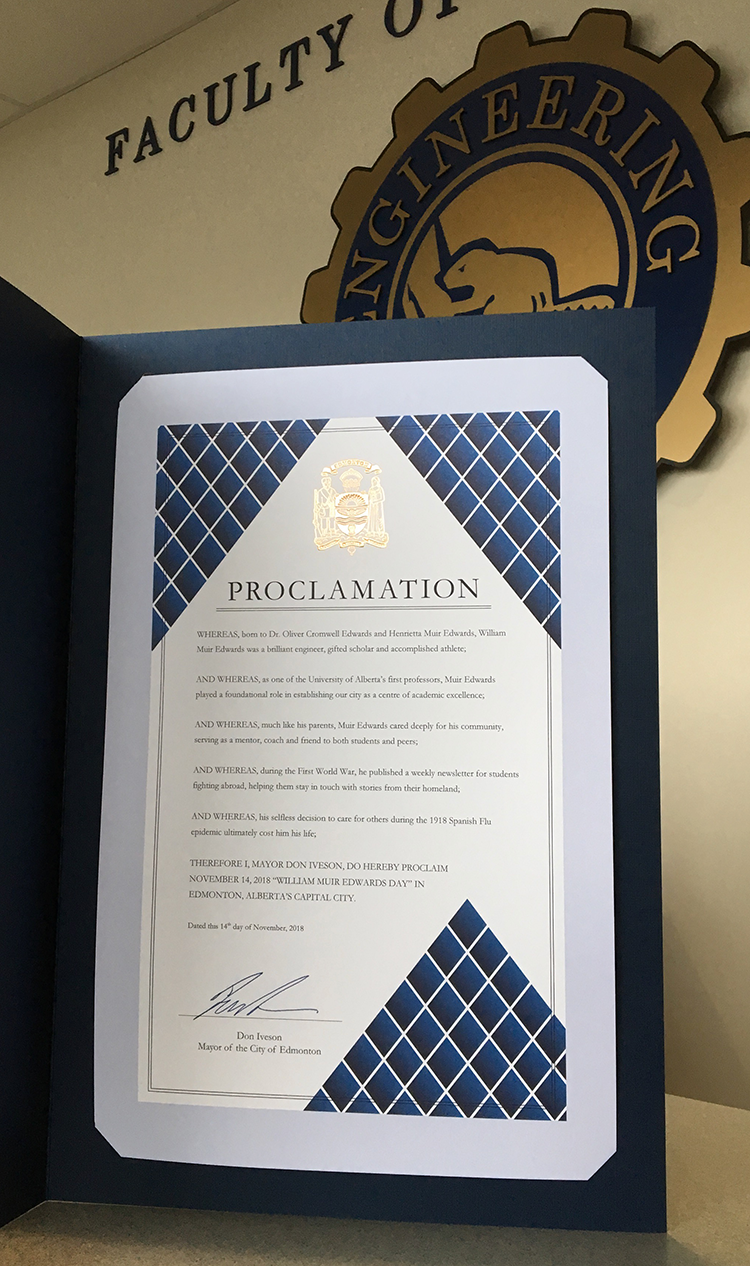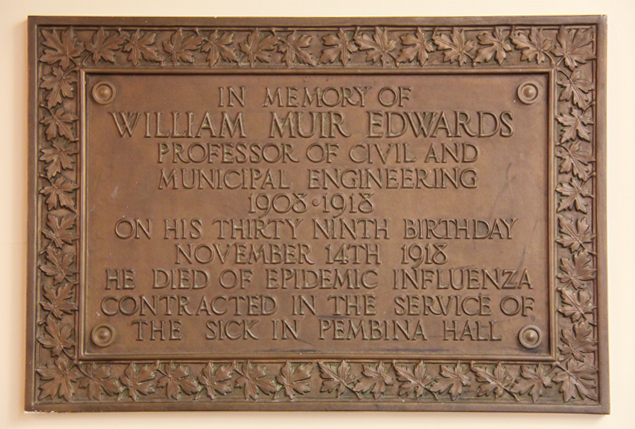
William Muir Edwards, the University of Alberta's first professor of engineering.
"Saving lives" isn't the first thing to spring to mind when you think of university professors or engineers. But that's precisely what the University of Alberta's first engineering professor did, through his technical skills, compassion, and his deep concern for the welfare of others.
In 1910, the U of A had been opened for just two years when civil engineering professor William Muir Edwards, one of the university's first four professors, ended a deadly outbreak of typhoid. The water-borne disease claimed hundreds of lives-even our own students. His investigation and repairs to a faulty water treatment plant stopped the outbreak and prevented further deaths.
Only eight years later, Muir died in the service of others, tending to victims of the global Spanish flu epidemic who were being treated at Pembina Hall. On Nov. 14, 2018, we commemorate the 100th anniversary of his death.
"He tenderly bore the sick in and reverently carried the dead out, and by ready acceptance of the meanest tasks inspired in others a true sense of service."

City of Edmonton Proclamation declaring November 14, 2018, William Muir Edwards Day.
His close friend and colleague, classics professor William Hardy Alexander, penned this upon Muir's death: "He tenderly bore the sick in and reverently carried the dead out, and by ready acceptance of the meanest tasks inspired in others a true sense of service."
Muir truly lived the U of A's vision "to inspire the human spirit through outstanding achievements in learning, discovery, and citizenship in a creative community, building one of the world's great universities for the public good."
Muir was a civil engineering professor. Founding President Henry Marshall Tory knew Alberta needed engineers to build roads and bridges and dams, and he wanted them educated at the University of Alberta. The first five engineers graduated from the U of A in 1913.
Muir's mother was the iconic Henrietta Muir Edwards, one of the "Famous Five" who won the right for women in Canada to vote. Muir himself graduated at the head of his class at McGill, earning his BSc in 1901. He immediately went on to earn his civil engineering degree at McGill the following year, winning the British Association Medal for Applied Science, then served as an assistant professor at McGill until 1907.
That's when Tory, also a McGill graduate, scooped Muir from McGill to the U of A.
Muir was more than just a bright young academic. He also excelled at sports. At McGill, he won the Athletic Association Silver Medal, breaking the record in the two-mile race. In 1908, he wasn't much older than his students and, after class, Muir would take them to the open fields in Strathcona, near the old CPR station, to teach them to play rugby football.
Students loved this man. He had heart and soul, was both friend and mentor, and students across campus named him as the first honorary president of the Athletic Club.
Muir's care for students and community grew over time. During the First World War, when many students were in the trenches, Muir poured himself into a weekly publication, the Comforts Club Newsletter, which was sent overseas along with hand-knitted socks, "tasty bits" like fruitcake and chocolate, and copies of The Gateway to students serving their country. The newsletter was like the Facebook of its time: Muir would aggregate news sent home from students fighting abroad, along with stories from the university and the province, and send it out every week to subscribers.
In 1918, as students returned to campus from the war, ready for celebration, the deadly Spanish flu epidemic hit, eventually claiming more lives than the First World War. Classes were cancelled. Pembina Hall was turned into an emergency hospital and morgue. Muir volunteered to nurse students through this deadly flu, and stayed away from his home, his wife Evelyn and his three young children, Douglas, Muriel and Joyce.
Muir died from the flu on his 39th birthday.

Plaque in the Old Arts Building commemorating the contributions of William Muir Edwards, the University of Alberta's first professor of engineering.
Today, in the Arts Building, you will find a plaque dedicated to Muir. It is the only plaque ever dedicated to a professor by the entire university. Muir is buried, with his parents, at Mount Pleasant Cemetery in Edmonton.
The family connection to the U of A remains strong. Muir's not-so distant relative, the Hon. James Edwards, is a former U of A board chair. He says Muir should be remembered for his contributions to the university and the community at large.
"Selfless service, athletics and civic contribution-those are the values he represents," says Edwards. "Tory gets most of the credit for establishing the university, and rightly so. But there were others involved and William Muir Edwards was one of them. He is a founder of this university. And I would say he founded well."
---
Ellen Schoeck is the author of I was There: A Century of Stories about the University of Alberta 1906 - 2006, and A Century of Campus Maps. Her forthcoming book, Born to Build: A People's History of the Faculty of Engineering, captures the stories of the University of Alberta's Faculty of Engineering.